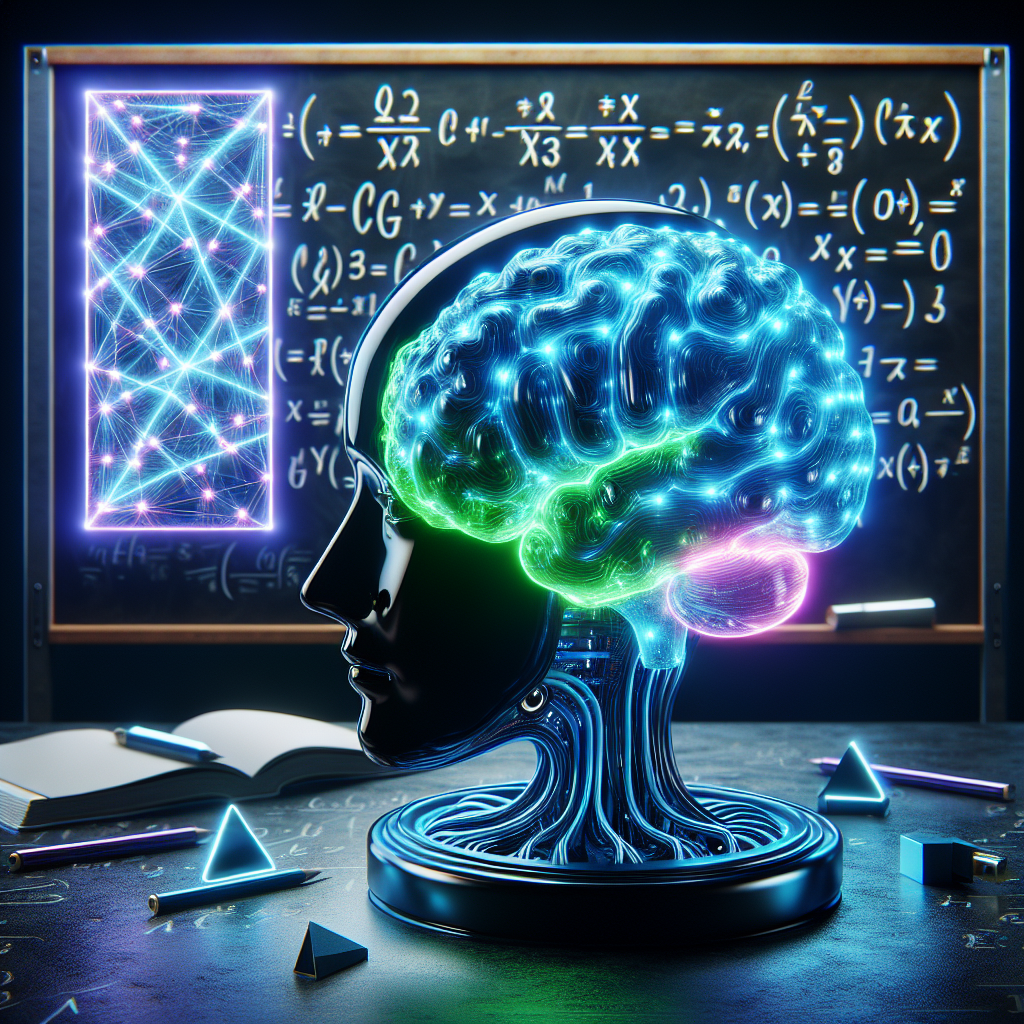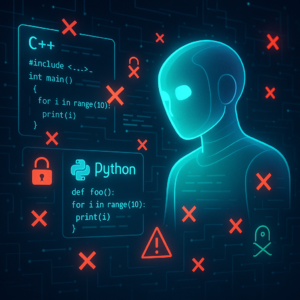Transforming AI: How Self-Correcting Language Models are Revolutionizing Mathematical Problem Solving

Transforming AI: How Self-Correcting Language Models are Revolutionizing Mathematical Problem Solving
Introduction
Imagine having a personal math tutor that not only calculates answers but also checks its work, corrects mistakes, and refines the solution until it’s perfect. Enter the world of Large Language Models (LLMs), the tech marvels behind chatbots and virtual assistants, now stepping up their game in mathematical reasoning with an innovative twist: self-correction. A team of researchers, including Kuofeng Gao, Huanqia Cai, and others, have developed a groundbreaking approach—The Chain of Self-Correction (CoSC)—that promises to amp up LLMs’ math power significantly. Let’s dive into how this self-correcting magic works and why it’s a game-changer.
The Problem with LLMs in Math
Even the most advanced LLMs like GPT-4 perform spectacularly in tasks involving language generation and comprehension. Yet, when it comes to solving math problems, they can falter. Why? Mathematical reasoning isn’t just about following logic; it involves multiple steps and re-evaluation, which currently stumps these models. Just like learning calculus isn’t the same as just understanding numbers, LLMs struggle with the leap from language to logic-heavy mathematical reasoning, often tripping over multi-step problems due to lack of inherent error-checking.
Introducing the Chain of Self-Correction (CoSC)
What is CoSC?
In simple terms, CoSC is like giving LLMs a self-reflective mirror. This mechanism coaches the models to not just spit out answers but to follow a process of generating solutions, poking holes in them, and refining them continuously till they hit the mark. It’s like teaching a robot how to learn from its mistakes.
How Does CoSC Work?
The process unfolds in stages. Here’s a quick walkthrough:
-
Program Initiation: The LLM gets a math problem and writes a program (imagine a mini, problem-solving computer code) to tackle it.
-
Execution & Output: The program is executed to produce results, akin to running calculations.
-
Verification: The model reviews the output to check if everything lines up with the original question.
-
Decision Making: If the result isn’t right, the model tweaks the program or tries a different approach, repeating the cycle until it hits the jackpot—an accurate answer.
This iterative process is similar to how we might solve a math problem: tackle, check, fix, and finalize.
Training Models to Think Again
To make self-correction affordable and scalable, the researchers developed a two-phase training strategy.
Phase One: Seed with GPT-4
The team initially uses a small set of math problems, getting GPT-4 to generate starting solutions. Think of it as laying a solid foundation, akin to teaching basic addition before tackling algebra.
Phase Two: Self-Enhance
The magic happens here: these foundational models then embark on a self-taught journey, generating and correcting their own problem-solving pathways, thus eliminating additional costly human inputs or GPT-4 interventions.
Real World Magic: CoSC in Action
The results are nothing short of impressive. CoSC-equipped models are excelling in mathematical datasets like MATH, outperforming titans like ChatGPT and multi-modal models, without even needing example demonstrations (something called zero-shot inference). Imagine an AI able to provide reliable help in education, research, or even day-to-day problem-solving, allowing humans to focus on deeper learning rather than rote calculations.
Implications Beyond Math
This self-check and correction procedure mirrors how humans approach problem-solving, slowing down to think critically. In the broader AI landscape, incorporating such mechanisms could lead to smarter, more autonomous systems in various fields, from chatbots that navigate complex user inquiries deftly to intelligent assistants that manage intricate scheduling without breaking a sweat.
Key Takeaways
-
Self-Correction is Key: The Chain of Self-Correction (CoSC) gives LLMs the ability to refine their mathematical reasoning autonomously, akin to human logical thinking processes.
-
Two-Phase Finetuning: With an initial seeding phase using GPT-4 and a subsequent self-enhancement phase, models learn to think critically at a low implementation cost.
-
Game-Changing Performance: Models with CoSC significantly outperform top-tier AI like ChatGPT and GPT-4 on difficult datasets, demonstrating the approach’s effectiveness.
-
Beyond Mathematical Reasoning: This mechanism has the potential to enhance AI’s efficiency in problem-solving across various domains, making them smarter and more reliable partners.
With CoSC, Large Language Models are poised to become not just information machines but genuine problem-solving companions, pushing the boundaries of what AI can achieve. Could this be the dawn of truly intelligent machines? Only time will tell, but the future looks promisingly clever.
If you are looking to improve your prompting skills and haven’t already, check out our free Advanced Prompt Engineering course.
This blog post is based on the research article “Embedding Self-Correction as an Inherent Ability in Large Language Models for Enhanced Mathematical Reasoning” by Authors: Kuofeng Gao, Huanqia Cai, Qingyao Shuai, Dihong Gong, Zhifeng Li. You can find the original article here.




